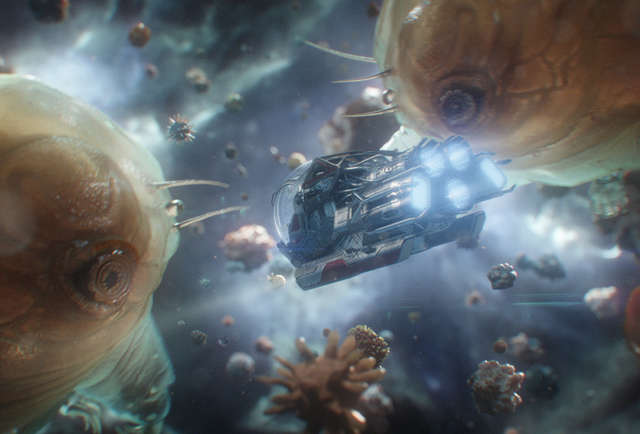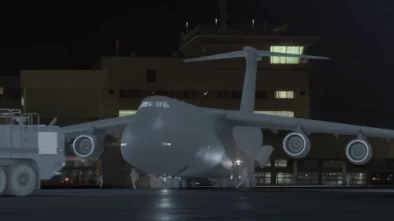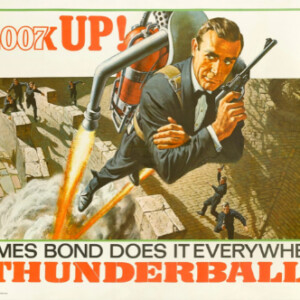The Science And Visual Effects Behind Ant Man’s Quantum Realm
In Ant-Man and the Wasp, Marvel brought to life one of its more mysterious locations–the Quantum Realm. As is often the case in the world of sci-fi, VFX artists turn to the world of science fact for inspiration. While Method Studios designed the Quantum Realm, it was the film’s production VFX Supervisor Stephane Ceretti who brought some real-world science to the production.
A Background in Quantum Physics
Ceretti, studied Quantum Mechanics at university in Lyon, France. As he told Vulture, physics provides a sound basis for work in VFX. “When you do these kinds of films and do these effects, it’s important to understand, a little bit, how physics works,” he said. “Because there is so much that we do that is simulation and re-creation of the real world, understanding physics and how things work is always a plus, I think.”
Even with his knowledge of Quantum Mechanics, his VFX work is also influenced by the first Ant-Man film, which provides only a brief glimpse of the Quantum Realm. Ceretti wasn’t a part of that film, so his work on the second film had to tie in with the first. But this was not much of a constraint as his background in science helped make the Quantum Realm grander in Ant-Man and the Wasp.
First, he looked at concept art given to him by Marvel, and then he commissioned further drawings. None of this art did the world any real justice. As Ceretti explained, “those [concept drawings] were still images and this is a very dynamic world. It changes all the time, every time, so we had to dig in really deep into what can we do to make this really cool and also to service the story.”

Using Glitching Effects And Macro Lensing To Create A Psychedelic World
Andrew Hellen, VFX Supervisor from Method Studios, followed Ceretti’s lead, and studied real science for his design of the Quantum Realm. “We did a lot of research into macro and cellular level photography and played with different ways to visualize quantum mechanics. It has a very magical quality, with a scientific edge. We also used glitching effects and macro lensing to ground the footage, and keep it from feeling too terrestrial.”
The Quantum Realm thus took on a kind of psychedelic look to it, when it vibrates around the characters exploring it. “Everything was moving,” Hellen told Thrillist. “Everything was an effects simulation. We had multiple different layers to those effects simulations to give us different types of effects. We had large crystalline-type spikes that were coming up out of the ground, as well as negative height fields, which were areas that were eating away down into the ground and had a refractive, glassy kind of quality to them with underneath lighting.”
Method Studios also worked on the tardigrades, microscopic creatures which at the subatomic level appeared to be giant monsters. In one scene, they move uncomfortably close to Hank Pym’s (Michael Douglas) pod forcing him to zoom out of harm’s way at the last second.
“We used real creatures [as a] reference just off the internet,” says Hellen. “We were playing around with the whole macro feel to them, so we implemented a lot of subsurface and macro photography to what was essentially a pollen-like environment.”
Another idea was to have the Quantum Realm react to the emotions of the characters. “When the pod crashes, the environment reacts,” Hellen told Art of VFX. “When Janet finds Hank, the tone shifts and the environment reacts. Some of the reactions were covered by the geometry reacting, some was (sic) just the color of the environment shifting .”

Hank Pym surrounded by ‘giant’ tardigrades
Simulations and Experimentation
Hellen explained that all the ‘geometry’ of the sequence “was all simulated in Houdini and rendered in Mantra. We used animated textures also created in Houdini to drive color and displacement, generating around 30 render passes and mattes to give comp control. We worked this way knowing that we’d do multiple versions of the color and performance of the environment in finding the right tone. We set up a workflow and worked with production to approve simulations before they were colored and comped, which meant we could try lots of different looks in comp without having to go back to 3D.”
To emphasize the otherworldly state of the Quantum Realm, Method Studios added lens aberrations, flares, and lens breathing. It’s interesting how often VFX artists come up with interesting effects through experimentation or even when playing around. Hellen said that the idea of adding lens flares came from witnessing one of the compositors making his own flares by shining a light through the bottom of a wine glass. This led to other experimentation. “We were just using all sorts of crazy stuff to mix into the images to add some complexity and weirdness,” he recalled.




